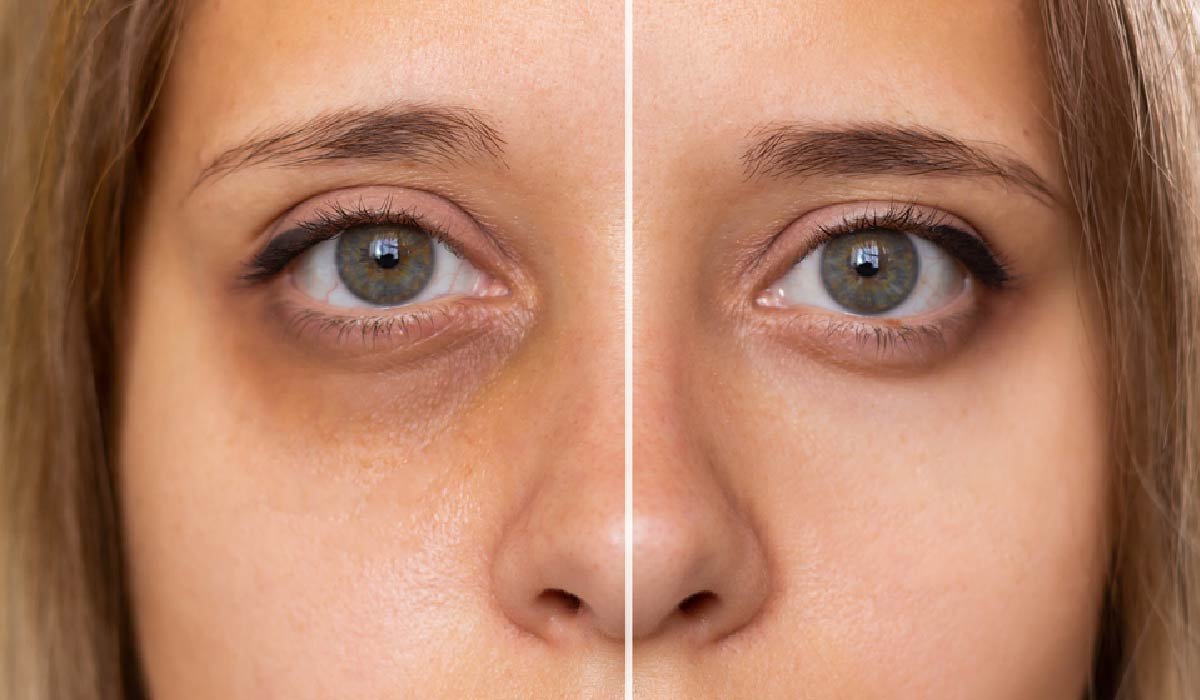Health
What Causes Dark Eye Circles and How to Treat Them?

Dark eye circles have a way of making us look more tired—or older—than we might actually feel. It’s a common frustration, and honestly, most of us have wondered at some point why we get those shadows under our eyes.
Dark circles usually show up because the skin around the eyes is thin, letting underlying blood vessels show through. Genetics, aging, lack of sleep, allergies, or too much sun can all play a part. When the skin thins out, those little vessels underneath become more obvious, which makes the area look darker.
There are lots of ways to tackle dark circles, from changing up your daily habits to more involved medical treatments. Getting proper sleep, drinking enough water, and using a cold compress can help. Some eye creams—especially those with vitamin C, retinol, or caffeine—might slowly make a difference, but you’ve got to stick with them for a while.
Primary Causes of Dark Eye Circles
Dark circles can pop up for all kinds of reasons. Genetics, the way you live, getting older, and even some health conditions can all play a role.
Genetic Factors
Some people just naturally get dark circles more easily. If your parents or grandparents had them, chances are you might too. People with deep-set eyes often see more shadows under their eyes. It’s just the way their bone structure works—nothing you can really change.
Inherited thin skin under the eyes makes blood vessels stand out, giving a bluish or purplish look. If your family tends to have more melanin, you might also notice darker coloring in this area. People from Mediterranean, Middle Eastern, or South Asian backgrounds often have more noticeable under-eye pigmentation, which can make circles look more prominent.
Lifestyle Influences
Not getting enough sleep is a big one. Less than 7-8 hours on a regular basis makes blood vessels under your eyes more obvious, especially if your skin there is thin.
Staring at screens all day? That eye strain can make things worse. Smoking, drinking alcohol, or eating too much salt also don’t do your eyes any favors—smoking breaks down collagen, alcohol dries you out, and salt leads to puffiness.
If you’re dehydrated, your skin looks duller and thinner, so the circles stand out more. Sun exposure isn’t great for the eye area either, since it can boost melanin and darken the skin around your eyes. Rubbing your eyes a lot can break little blood vessels and damage the skin, making circles even more noticeable.
Aging and Skin Changes
Getting older means your skin loses some of its bounce—collagen and elastin start to disappear. That makes blood vessels easier to see and creates hollows that cast shadows. Fat pads under the eyes shrink and shift as you age, which can leave depressions that look like dark shadows, even if you’re sleeping well.
Skin under the eyes is already thinner than the rest of your face, and aging just makes that more obvious. All those years of smiling or squinting? They slowly break down the skin’s support structure. And when you lose volume in your cheeks, it can leave a little groove called a tear trough, which makes the area look even darker.
Underlying Medical Conditions
Allergies are a common culprit. When you have a reaction, your body releases histamines that make blood vessels swell and cause congestion around your eyes.
Anemia (especially iron deficiency), thyroid problems, chronic sinus issues, eczema, and nasal congestion can all leave you with darker circles. Some medications—like vasodilators or certain eye drops—can also change how the skin looks under your eyes.
Lacking vitamins like K, D, E, or B12? That can affect your skin’s health and make circles worse. Health conditions that cause fluid retention may leave you with puffiness and shadows too.
Effective Treatments and Prevention Strategies
You can actually improve dark circles with the right mix of treatments and daily habits. What works best depends on what’s causing your circles, how dark they are, your skin type, and honestly, how much you want to spend.
Effective Treatments for Under-Eye Circles
For those seeking dark eye circle treatment in Singapore, many clinics offer effective options, with laser therapy being a popular choice. This treatment targets pigmentation and stimulates collagen production, though it typically costs between $300 and $800 per session.
Fillers are another common fix. Hyaluronic acid injections add volume to hollow spots and last about 9-12 months, with prices ranging from $600-$1,200. Chemical peels are also available (typically $150-$300) and can help lighten discoloration. Many clinics suggest combining treatments for better results.
Most people need a few sessions—usually 3-5—for the best outcome. Because Singapore’s climate is humid, you’ll need to take care of your skin and protect it from the sun to keep those results looking good.
Topical Treatments and Ingredients
Some topical products can help if you use them regularly. Vitamin C serums brighten skin and fight pigmentation, especially if you use a 10-20% concentration. Retinoids help by speeding up skin renewal and boosting collagen, but start low (0.025-0.05%) to avoid irritation.
Niacinamide helps strengthen your skin’s barrier, caffeine can shrink puffiness, peptides support collagen, and hyaluronic acid hydrates and plumps up thin skin. With these, you’ll usually see results after a month or two if you apply them morning and night.
Professional Procedures
If you want something stronger, professional treatments can make a bigger difference. Microneedling, for example, uses tiny needles to encourage collagen growth. It costs about $200-$400 per session, and you’ll need a few treatments.
Platelet-rich plasma (PRP) therapy uses your own blood to help regenerate skin, and it’s particularly good for thin skin. Sessions run $500-$800. Lasers can target different issues—Q-switched for pigmentation, fractional for overall skin, and pulsed dye for blood vessels.
For severe cases, there’s always blepharoplasty surgery, which removes or repositions fat pads. Recovery takes a week or two, and it’s definitely an investment (around $3,000-$5,000).
Lifestyle Modifications
Sometimes, the basics really do help. Aim for 7-8 hours of solid sleep, and try propping your head up at night to keep fluid from pooling under your eyes. Cutting back on salt and drinking 8-10 glasses of water a day can help reduce puffiness. Sunglasses with UV protection and a daily SPF 30+ sunscreen are must-haves, even on cloudy days.
If you have allergies, managing them with the right meds can keep you from rubbing your eyes and making things worse. Regular exercise boosts circulation, which might help with vascular dark circles. And if you smoke, quitting can make a real difference for your skin’s health and resilience.
At-Home Remedies
If you’re looking for ways to make dark circles less noticeable at home, a few simple tricks might help. Cold compresses—like chilled cucumber slices or tea bags—can shrink blood vessels and ease puffiness if you leave them on your eyes for about 10-15 minutes.
Green tea bags are a favorite for a reason. They’ve got caffeine and antioxidants that can help tighten up those blood vessels under your eyes. Just steep them, let them cool, and then rest them on your eyelids for a bit.
Some people swear by these DIY fixes
Some people use natural remedies to help lighten skin. Cold milk compresses may work due to the lactic acid, which can gently brighten skin over time. Raw potato slices are believed to have a natural bleaching effect that may reduce dark spots. Meanwhile, massaging with almond oil can deeply nourish the skin, thanks to its rich vitamin E content.
Try a light massage around your eyes using your ring fingers and barely-there pressure, moving outward. It’s surprisingly relaxing and can boost circulation.
If you’re into makeup, a peach or orange color corrector can cancel out those bluish tones before you dab on concealer. Dust on a little translucent powder afterward to keep everything in place. Sometimes, it’s all about finding what feels good for you.
-

 Celebrity1 year ago
Celebrity1 year agoWho Is Jennifer Rauchet?: All You Need To Know About Pete Hegseth’s Wife
-

 Celebrity1 year ago
Celebrity1 year agoWho Is Mindy Jennings?: All You Need To Know About Ken Jennings Wife
-

 Celebrity1 year ago
Celebrity1 year agoWho Is Enrica Cenzatti?: The Untold Story of Andrea Bocelli’s Ex-Wife
-

 Celebrity1 year ago
Celebrity1 year agoWho Is Klarissa Munz: The Untold Story of Freddie Highmore’s Wife
















